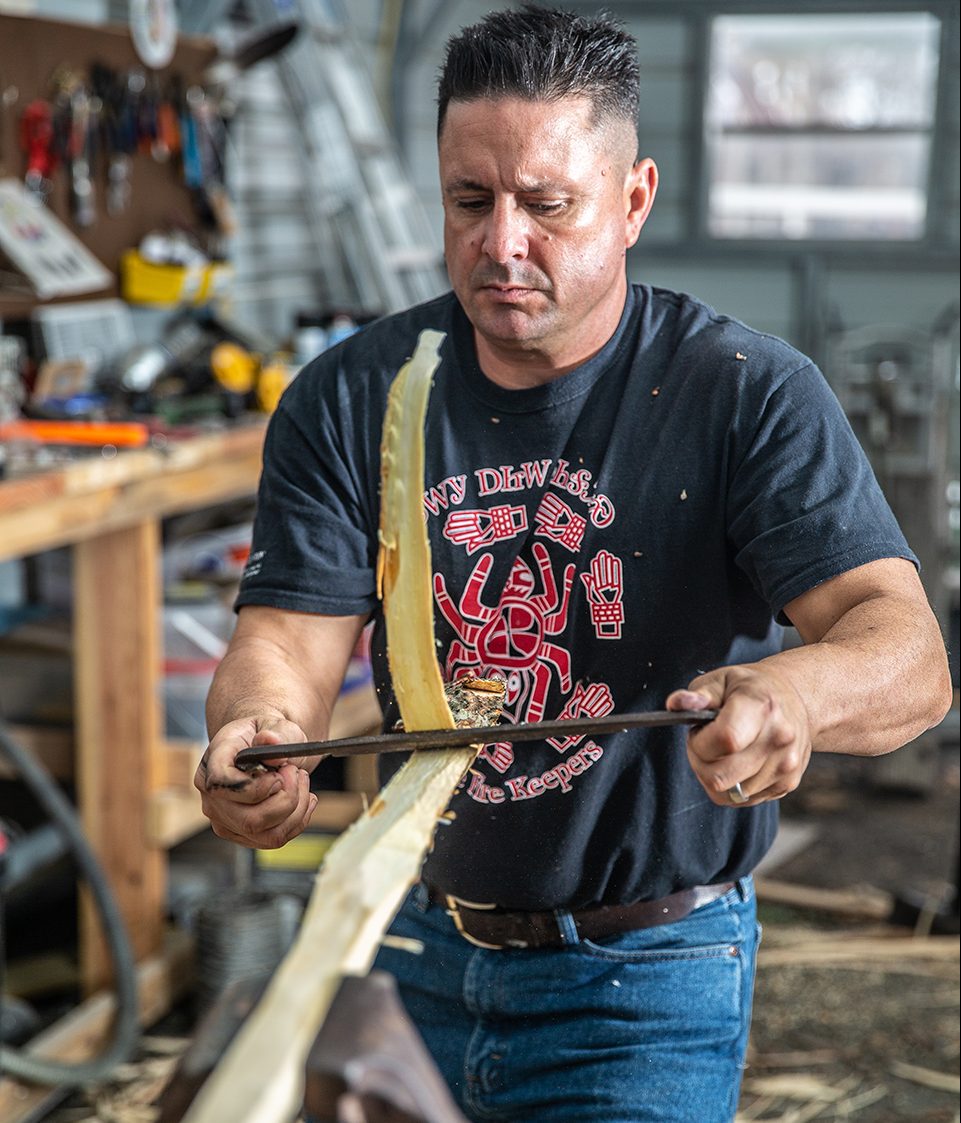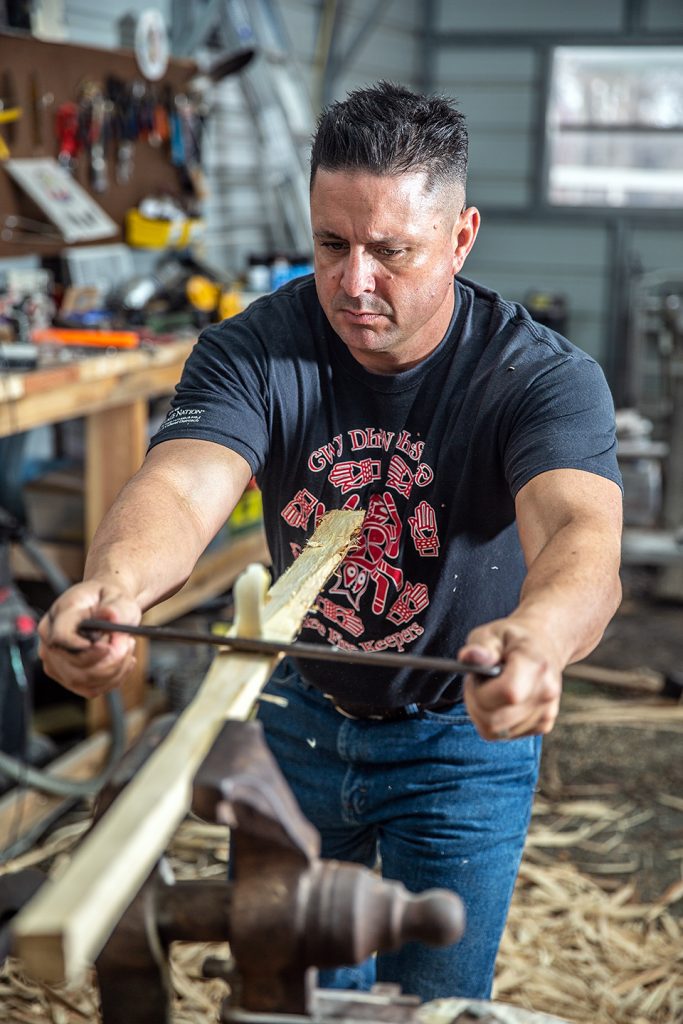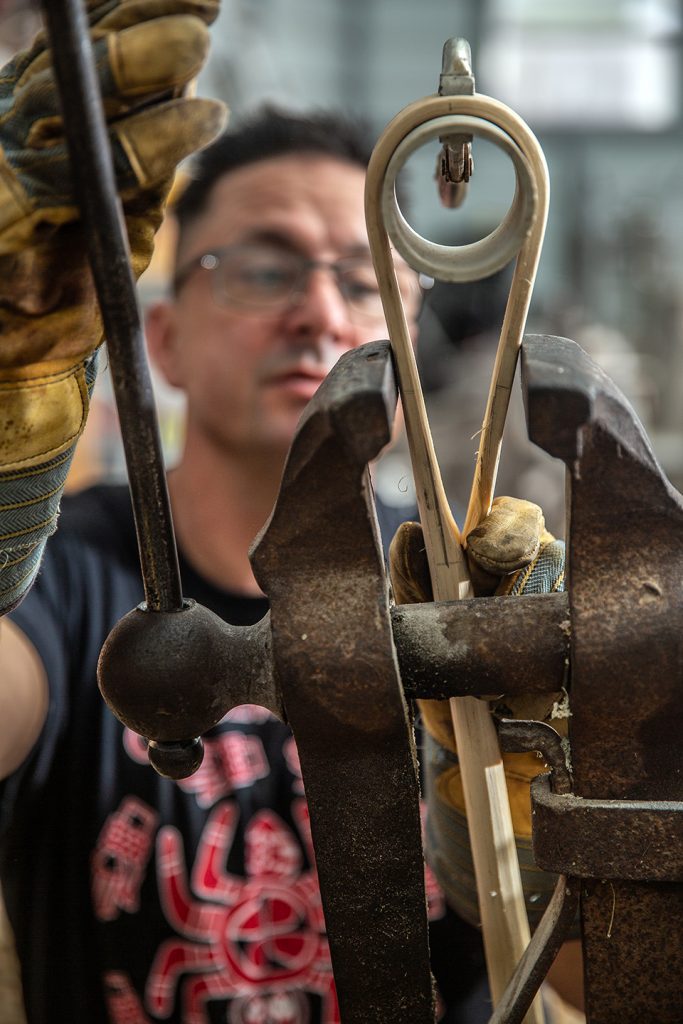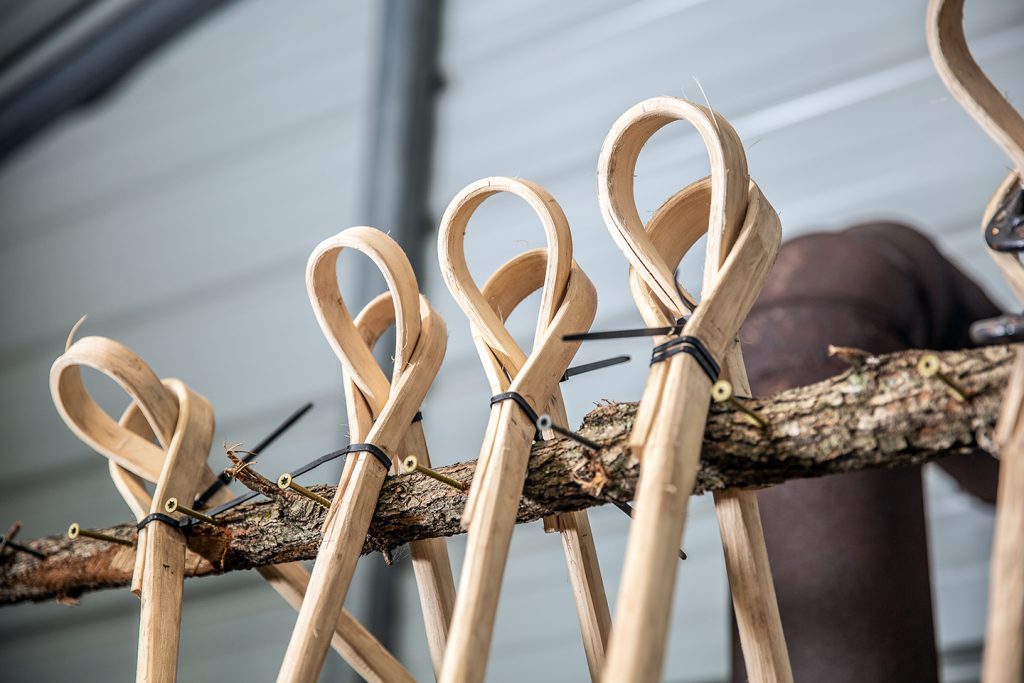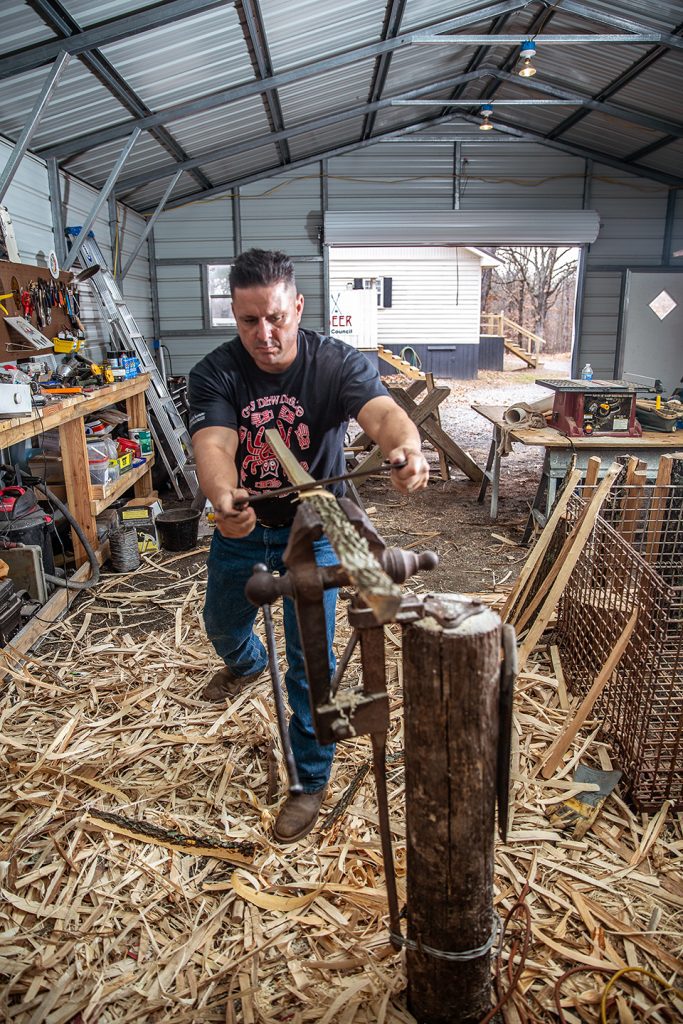David Comingdeer has spent most of his 47 years dedicated to improving the lives of fellow Cherokees.
The father of four and grandfather of six has been chief of the Echota Ground in Cherokee County for 17 years. It’s more of a cultural title than a political one, a lifetime appointment based on merit, leadership and service to the tribe.
The ceremonial ground over which Comingdeer presides is what remains of the tribal area established when the U.S. government forcibly removed Cherokees from their original lands in northern Georgia, eastern Tennessee and other parts of the southeastern United States in winter 1838-1839. The Cherokees traveled along the Trail of Tears and settled in what eventually became Oklahoma.
Echota, used as a dancing site and stomp ground several times a year, has a ceremonial fire that’s kept burning. Comingdeer, who has traced his family back five generations, takes his role seriously. He sees himself as a cultural protector, one who stands for his people by passing Cherokee traditions and language to future generations.
Comingdeer lives and breathes Cherokee culture and sees it as a full-time occupation. In 2016, he retired from a 25-year career as a federal wildland firefighter for the Eastern Oklahoma Bureau of Indian Affairs; stationed in the Cherokee Nation, he fought wildfires in 22 states and 12 tribal jurisdictions.
In 2014, Comingdeer was named a Cherokee National Treasure for his skill in stick-making, specifically for the primary equipment used in stickball. For hundreds of years, the game was used by southeastern tribes to settle political and other disputes in a nonviolent way. Also called the Little Brother of War, stickball fascinated European immigrants so much that many modern sports derived from it, such as lacrosse, field hockey and ice hockey.
The previous year, Comingdeer and a group of fellow firefighters rebuilt 14 structures by hand at the Cherokee Heritage Center in Park Hill, south of Tahlequah. Built in the late 1960s to resemble a prehistoric Cherokee village, the Diligwa, the center’s primary living exhibit, preserves Cherokee history and culture, but advancements in archaeology and anthropology had made the original structures obsolete. Comingdeer and his tribesmen hand-cut more than 2,000 logs before taking them to the site for the reconstructions.
Recognition also came to Comingdeer in 2009 at the 25th anniversary of the lighting of the Cherokees’ ceremonial flame at their historic meeting place in Red Clay, Tennessee. This flame represented the 1984 alignment of the Eastern Band of Cherokees and the Cherokee Nation at the first joint council meeting to take place in 146 years – before the forced relocation.
With a week’s notice, Comingdeer and seven of his firefighting rangers carried the ceremonial torch more than 170 miles from a reservation in North Carolina to relight the flame in Tennessee. Comingdeer ran 31 of those miles – and he considers it one of the greatest honors of his life.
That’s what Comingdeer says his mission is all about. As the Echota Ground chief, “I am called to be there – steadfast, like a stone – for the Cherokee. My job is to say yes to my people.”
With that lifetime appointment and an upcoming political bid for a seat on the Cherokee council in 2021, Comingdeer will say yes to his people for years to come.






















